

Editor’s Note: It is a classic piece of American literature. It received the prestigious Pulitzer Prize for its author, Stephen Vincent Benet
in 1930. The great actor, Charles Laughton, adapted this epic poem in the 1950’s into a staged reading with star performances by Tyrone Power, Raymond Massey and Judith Anderson, along with a complex choral score by Walter Schumann. It was an
unforseen but redeeming success. And it has been remembered and forgotten and remembered again, decade after decade, for over seventy years. John Brown’s Body speaks to the blood-center of the American
visage. It was a major influence on the more famous American Civil War epic - Gone With The Wind. The title comes from a popular pre-Civil War song which was later
changed and re-titled as, The Battle Hymn Of The Republic.
Benet’s writing is quite beautiful and when staged, the imagery is magnificent. But, John Brown’s Body is not a “nice” piece. For an audience,it is confrontational, soul-searching, and provocative. In addition, for contemporary audiences, it tasks them to listen, to absorb, to remember.
This new production by Joseph DeFrancesco is staged in an unusual place, San Quentin, a high-profile prison in America’s high-profile prison system. Equally unusual is the success of the inmate-actors and the daunting commitment to perform
“off-book”, something never done before with this work. The two-year journey to performance is worth a documentary production in itself.
John Brown’s Body at San Quentin Prison will be seen for only
two performances at the prison and will be taped for later broadcast.

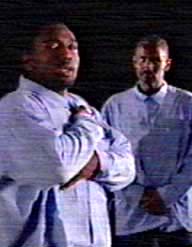
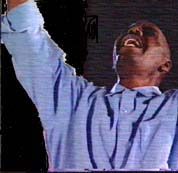

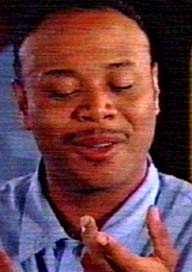
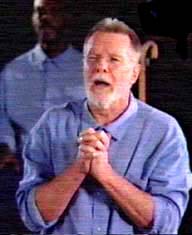

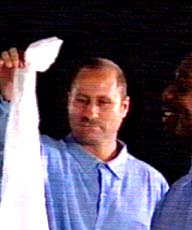

An ethnically mixed cast of prisoners at San Quentin performs the classic piece of American literature about race and the Civil War,John Brown’s Body, by Stephen Vincent Benet, for inmates and the invited public. This is not a poetic reading but a dynamically staged drama. In word, action and song this Pulitzer Prize winner of 1930 is an eloquent plea for tolerance and understanding. It is a clear-eyed look at heroes, bigots, lovers and victims at the moment of our greatest test as a nation. It is a story told in ninety minutes of how we Americans came to be who we are.
Conceived and adapted by filmmaker and Academy Award/Emmy Award winning editor, Joseph DeFrancesco, this live stage presentation will be seen only at San Quentin and then filmed for future broadcast.
For the last two years some 10 men have labored faithfully in a drama workshop exclusively on this great work, with the goal of performing the piece. The tremendous challenge this presented has had a galvanizing effect on them. They absorbed the high and beautiful message of the play and are commited to share it with as many people as possible, starting with a selection of their fellow inmates.
John Brown’s Body is not a drama in the conventional sense, but an epic poem. This epic, like others of its type, is really a series of stories set against a single historical background, in this case the Civil War. The story follows the chronology of the war, starting with its cause, slavery. The real interest is seeing and hearing crucial history through a cross-section of finely drawn characters. There are three heroes, Jack Ellyat from the North, Clay Wingate from the South and Spade the freedom-bound runaway slave. Their lives during the war, their loves and their aspirations are the threads that hold the work together. Many other people crowd the stage, including Robert E. Lee, Abraham Lincoln and, of course, John Brown.
As adapted for San Quentin prison John Brown’s Body is a unique theatrical experience. The powerful narrative (it inspired Margaret Mitchell to write Gone with the Wind) is a neglected American masterpiece – our Iliad. It is both a lesson in history and a meditation on race. The production is not a a static reading. It’s dynamically acted, whether on a slave ship, a plantation dance, a desperate swim to freedom, or as part of the battle of Gettysburg. Additionally, the men of the drama workshop, The San Quentin Players, have accepted the unique challenge of committing the script to memory; to perform “off book”, something never before done.
Just as John Brown’s Body is a unique piece of theatre, the accompanying music is also unusual. The singers function as a Greek chorus, a Gospel choir, as a source of sound effects and as a means of transition from place to place in the large story.
DeFrancesco, has made his mark, achieved his awards in social documentary. With all of the unusual and challenging circumstances that embraced the two-year development of this production, he sees it as a unique, vital event and work of art:
“The idea that a racially mixed group of prisoners would tell a story of America binding up its wounds after battle and working cooperatively to build a greater nation has incredible impact.”
©2002 ALL RIGHTS RESERVED
© 2002 Aviar-DKA Ltd. All rights reserved (including authors’ and individual copyrights as indicated). No
part of this material may be reproduced, translated, transmitted, framed or stored in a retrieval system for
public or private use without the written permission of the publisher and the individual copyright holder.
For permissions, contact publishers@scene4.com
.

All articles are archived on this site.
To access the Archives .
